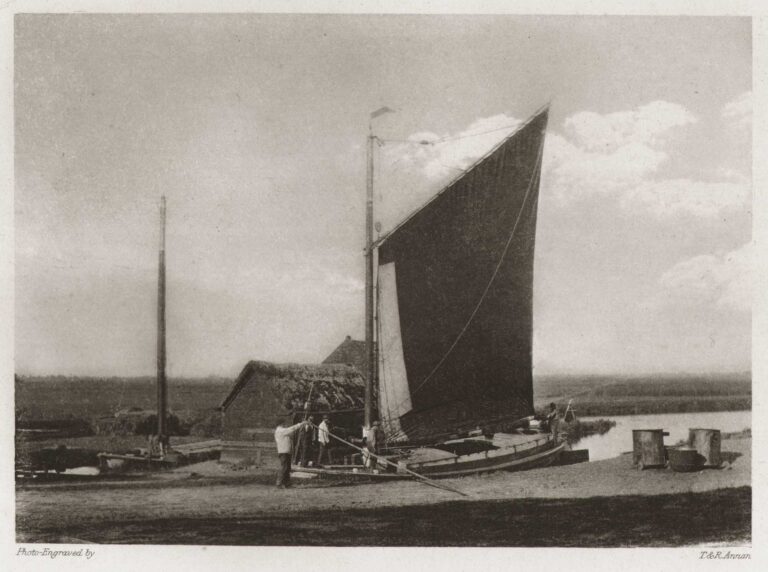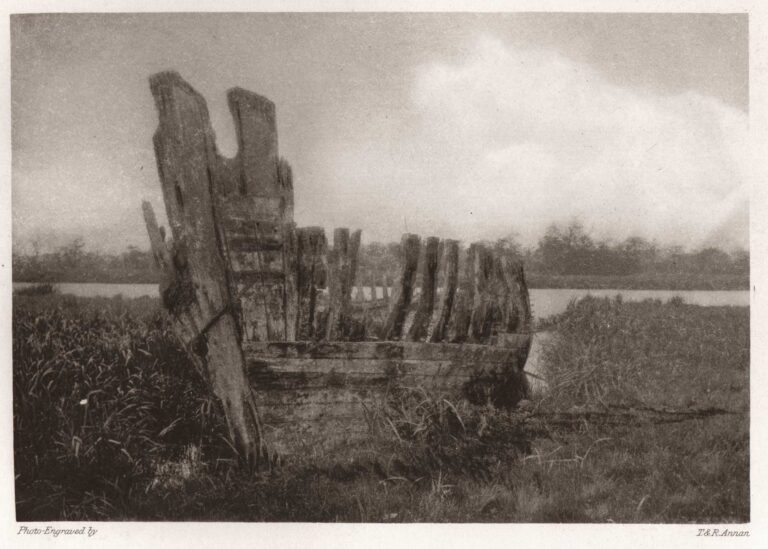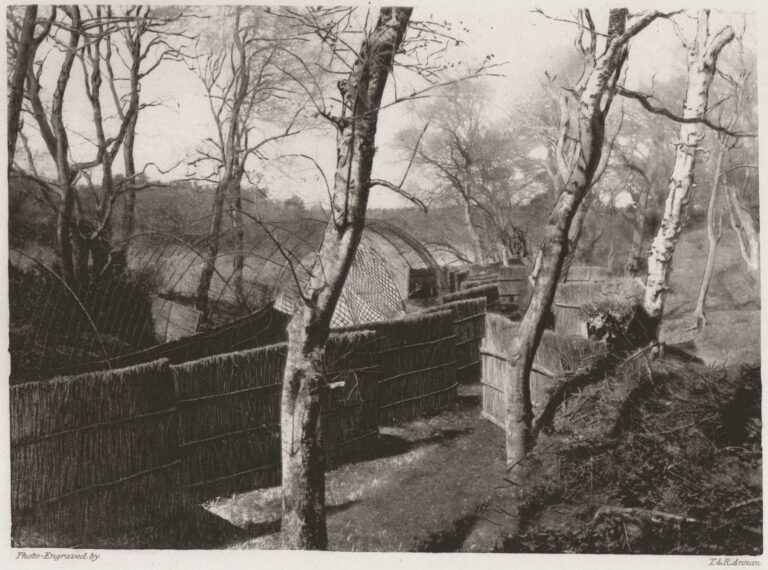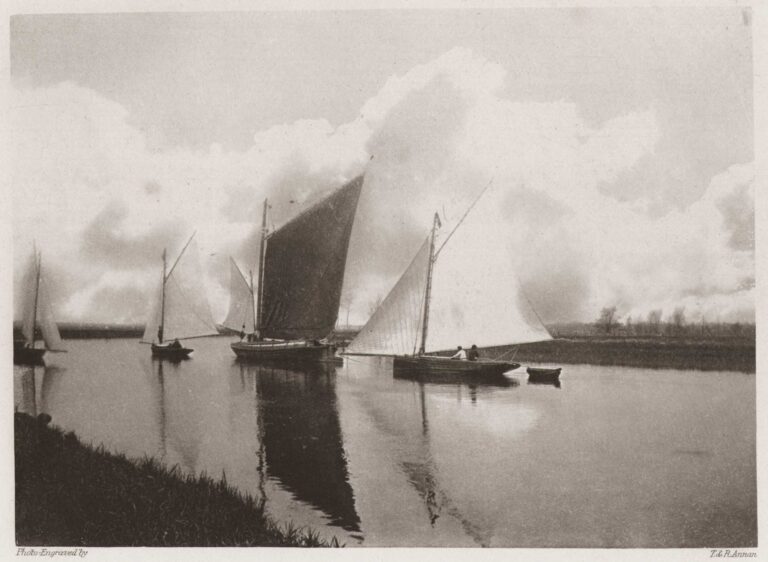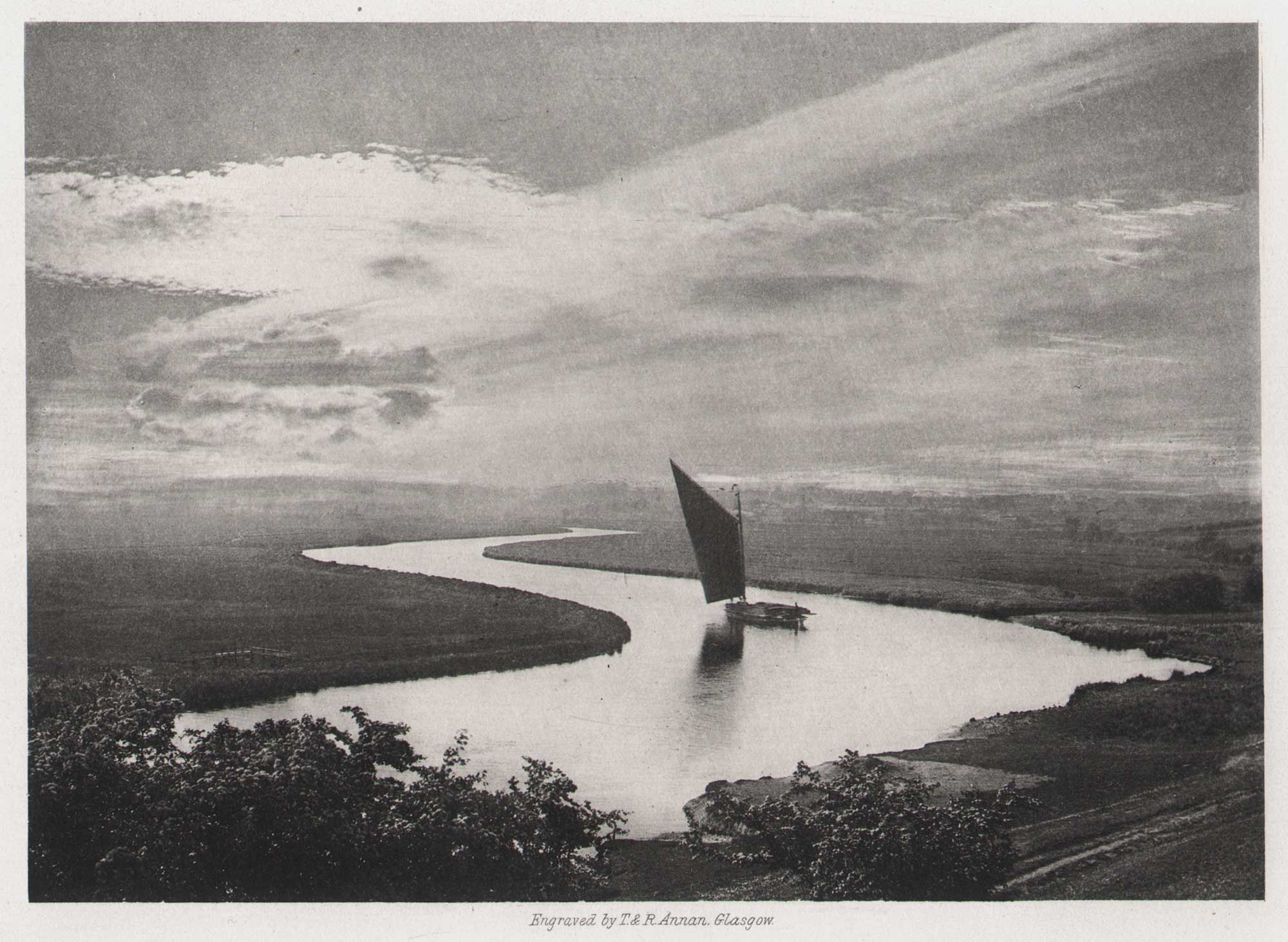
Whitlingham Vale (from Postwick)
“Well, the view from Postwick was worth seeing. The curving reaches of the river, animated with yachts, wherries, and boats, lay beneath us, and the green marshes were bounded by the woods of Thorpe, Whitlingham, and Bramerton, while the ruined church of Whitlingham stood boldly on the brow of the opposite hill.” ⎯George Christopher Davies, The Handbook to the Rivers & Broads of Norfolk & Suffolk, 1882
George Christopher Davies: 1849-1922
This view shows a wherry boat under sail on the River Yare and Whitlingham Vale from Postwick Grove, looking towards Norwich. David Holmes, writing in his volume The Broads Through Time, (Amberley Publishing Limited, 2009) comments:
“This is one of the most enduring images of the Broads. G. Christopher Davies’ famous picture, taken in 1882, of the Yare Valley from the steep river terrace at Postwick Grove, captured a view that will never be seen again. Trees have now covered the slopes and dense, bushy scrub dominates the formerly open marshland. The Norwich Southern bypass sweeps across the valley at a high level, just visible towards the right of the modern picture.”
Davies was “a prolific photographer and writer who played an important role in encouraging popular awareness of the Norfolk Broads.” (1.) The following biography of the artist courtesy: Norfolk Through a Lens: A guide to the Photographic Collections held by Norfolk Library & Information Service –
Born in Shropshire, Davies practised as a solicitor for a time; he first came to Norfolk in 1871 to serve part of his articles. He was later to become Chief Clerk at Norfolk County Council in 1906, also serving as Clerk of the Peace. In his private life he was a nature lover, sportsman and photographer. His skills as a writer did much to popularise the Norfolk Broads as a rural idyll and holiday destination. When he was 27 he wrote ‘The Swan and her Crew’ an adventure story for boys set in the Norfolk Broads which created a great interest and enthusiasm for the area. His major work ‘Handbook to the Rivers and Broads of Norfolk and Suffolk’ was published in 55 editions and contained 12 of his own photographs. Davies also produced other books about the Broads, sailing, Belgian waterways, natural history, fishing, adventure books for children and even some on government administration. Towards the end of his life he acquired Burnt Fen Broad and spent many hours there during his retirement.
1876
Davies first wrote about this area for his 1876 novel The Swan and her crew, or The Adventures of Three Young Naturalists and Sportsmen on the Broads and Rivers of Norfolk:
“The race was at three o’clock, and a goodly company had assembled at Whitlingham to witness it. The course was from below Postwick Grove to Whitlingham, a distance of two miles, the latter part of which was a long straight course, where for nearly a mile the boats could be seen by all the spectators. “How do you feel, old man?” said Jimmy to Frank as he was in the boat-house dressing.
“Oh, all right; we mean to win.” “I don’t know that you will though. I have seen the other crew rowing past on their way to the course. They have got such a splendid long stroke and swing so evenly.” (London, Frederick Warne and co. Chapter XVII, p. 113)
1882
Later, in his 1882 volume The Handbook to the Rivers & Broads of Norfolk & Suffolk, he described the area in greater detail:
It was an hour before we got under way again, and when, after sailing down the long straight reach by Whitlingham, we came in sight of the eminence known as Postwick Grove. Wynne wished to land in order that he might see the view from the top, the man burst into open grumbling. So we asked him if the trip were undertaken for his pleasure or ours, and on his reluctantly admitting that it was for ours, we told him it was our pleasure to do as we liked, and he resigned himself to his fate. The watermen on these rivers are very civil, but they look with disfavour upon anything which interferes with actual sailing.
Well, the view from Postwick was worth seeing. The curving reaches of the river, animated with yachts, wherries, and boats, lay beneath us, and the green marshes were bounded by the woods of Thorpe, Whitlingham, and Bramerton, while the ruined church of Whitlingham stood boldly on the brow of the opposite hill. (Chapter II: Down the Yare. Norwich to Reedham. p. 17)
1883 | 1889
Finally, Davies writes about this photograph specifically, the following taken from the letterpress of the earlier 1883 second series portfolio (plate X) or compiled 1889 folio of The Scenery of the Broads and Rivers of Norfolk and Suffolk issued by London publisher Jarrold and Sons:
Whitlingham Vale, Standing upon the highground of Postwick Grove, and looking towards Norwich, you command a view of Whitlingham Vale, and the river winding through it with the sinuosity so characteristic of the Norfolk Rivers. The inevitable wherry, without which no marsh landscape would be complete, is here sailing leisurely into the misty distance where her voyage will end.
- George Christopher Davies: Wikipedia: accessed September, 2025
